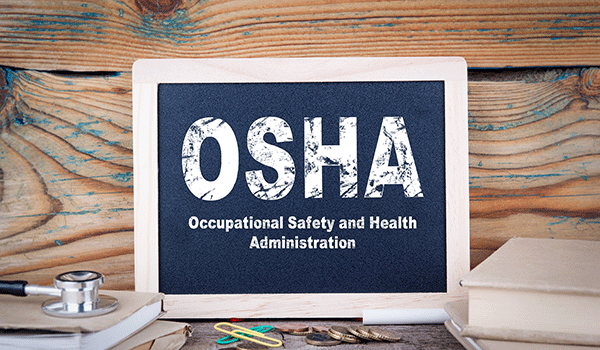
Guidance of great interest to US employers was released by the Department of Labor’s Occupational Health and Safety Administration (OSHA) late last week. The COVID-19 Vaccination and Testing Emergency Temporary Standard (ETS) is long-awaited and provides workplaces with binding requirements designed to protect worker health during the Pandemic.
The best form of protection from the SARS-CoV-2, the virus which causes COVID-19, is vaccination with an approved vaccine. We now use the term ‘vaccine preventable disease’ when discussing COVID-19, just like many other diseases we are fortunate to have developed vaccines for. At this point there are still a very large number of unvaccinated people in the workforce, and unvaccinated workers are much more likely to be infected, infect others and have serious disease, potentially requiring hospitalization, than vaccinated workers. Similarly, those unvaccinated have a much higher likelihood of dying from COVID-19 than vaccinated workers.
As a result of these facts, OSHA has put together requirements to help reduce risk in the workplace and bring about the end of the Pandemic. Here is a summary of the key points of the Vaccination and Testing Emergency Temporary Standard:
- The binding requirements come into effect on January 4, 2022.
- The ETS covers employers with 100 or more employees in total.
- It does not cover healthcare services or healthcare support services, which are covered under a separate Healthcare ETS.
- The requirements of the ETS do not apply to:
- Employees who do not report to a workplace where other individuals are present.
- Employees while working from home.
- Employees who work exclusively outdoors.
- Employers must develop, implement, and enforce a mandatory COVID-19 vaccination policy, with an exception for employers that instead establish, implement, and enforce a policy allowing employees to elect either to get vaccinated or to undergo weekly COVID-19 testing (as a minimum) and wear a face covering at the workplace.
- Employers must determine the vaccination status of each employee, obtain acceptable proof of vaccination from vaccinated employees, maintain records of each employee’s vaccination status, and maintain a roster of each employee’s vaccination status.
- Support vaccination by providing employees reasonable time, including up to four hours of paid time, to receive each primary vaccination dose, and reasonable time and paid sick leave to recover from any side effects experienced following each primary vaccination dose.
- Ensure that each employee who is not fully vaccinated is tested for COVID-19 at least weekly (if in the workplace at least once a week) or within 7 days before returning to work (if away from the workplace for a week or longer).
- Require employees to promptly provide notice when they receive a positive COVID-19 test or are diagnosed with COVID-19.
- Immediately remove from the workplace any employee, regardless of vaccination status, who received a positive COVID-19 test or is diagnosed with COVID-19 by a licensed healthcare provider, and keep the employee out of the workplace until return to work criteria are met.
- Ensure that each employee who is not fully vaccinated wears a face covering when indoors or when occupying a vehicle with another person for work purposes, except in certain limited circumstances.
- Provide each employee with information, in a language and at a literacy level the employee understands, about the requirements of the Emergency Temporary Standard and workplace policies and procedures established to implement the ETS; vaccine efficacy, safety, and the benefits of being vaccinated (by providing the CDC document “Key Things to Know About COVID-19 Vaccines”); protections against retaliation and discrimination; and laws that provide for criminal penalties for knowingly supplying false statements or documentation.
- Report work-related COVID-19 fatalities to OSHA within 8 hours of learning about them, and work-related COVID-19 in-patient hospitalizations within 24 hours of the employer learning about the hospitalization.
- Make certain records available for examination and copying to an employee (and to anyone having written authorized consent of that employee) or an employee representative.
There are readily available technology solutions for employers to leverage to help them achieve compliance with these requirements. Some of these secure, mobile-first solutions include:
- Allowing workers to upload proof of, and attest to vaccination status using an easy-to-use app that can be supportive of an employer’s vaccination policy.
- Allowing workers to upload proof of, and attest to testing outcomes, such as a rapid antigen screen or PCR test, at the frequency of their choosing, such as every day, or 3, 5, 7 days as supported by an employer’s policy.
- Allowing workers to upload employer exemption forms under medical/religious accommodation requests to support vaccination status.
- Being available in multiple languages.
Finally, some technology solutions providers have partnered with testing supply vendors to ensure that rapid antigen screening and PCR tests are available to employers who have opted to allow testing of their workers.
Updated on 12/20/21:
The challenge to OSHAs ETS was stayed, and “OSHA can now once again implement this vital workplace health standard, which will protect the health of workers by mitigating the spread of the unprecedented virus in the workplace.”
Critical details are:
- OSHA will not issue citations for non-compliance with any requirements of the ETS before January 10, 2022
- OSHA will not issue citations for noncompliance with the standard’s testing requirements before February 9, 2022
- As long as an employer is exercising reasonable, good faith efforts to come into compliance with the standard
Employers with more than 100 associates should be moving forward to demonstrate compliance with the ETS and implement digital strategies right away: vaccine mandate tracking and testing mandate tracking are a must, and given the omicron variant, it is urgent.

